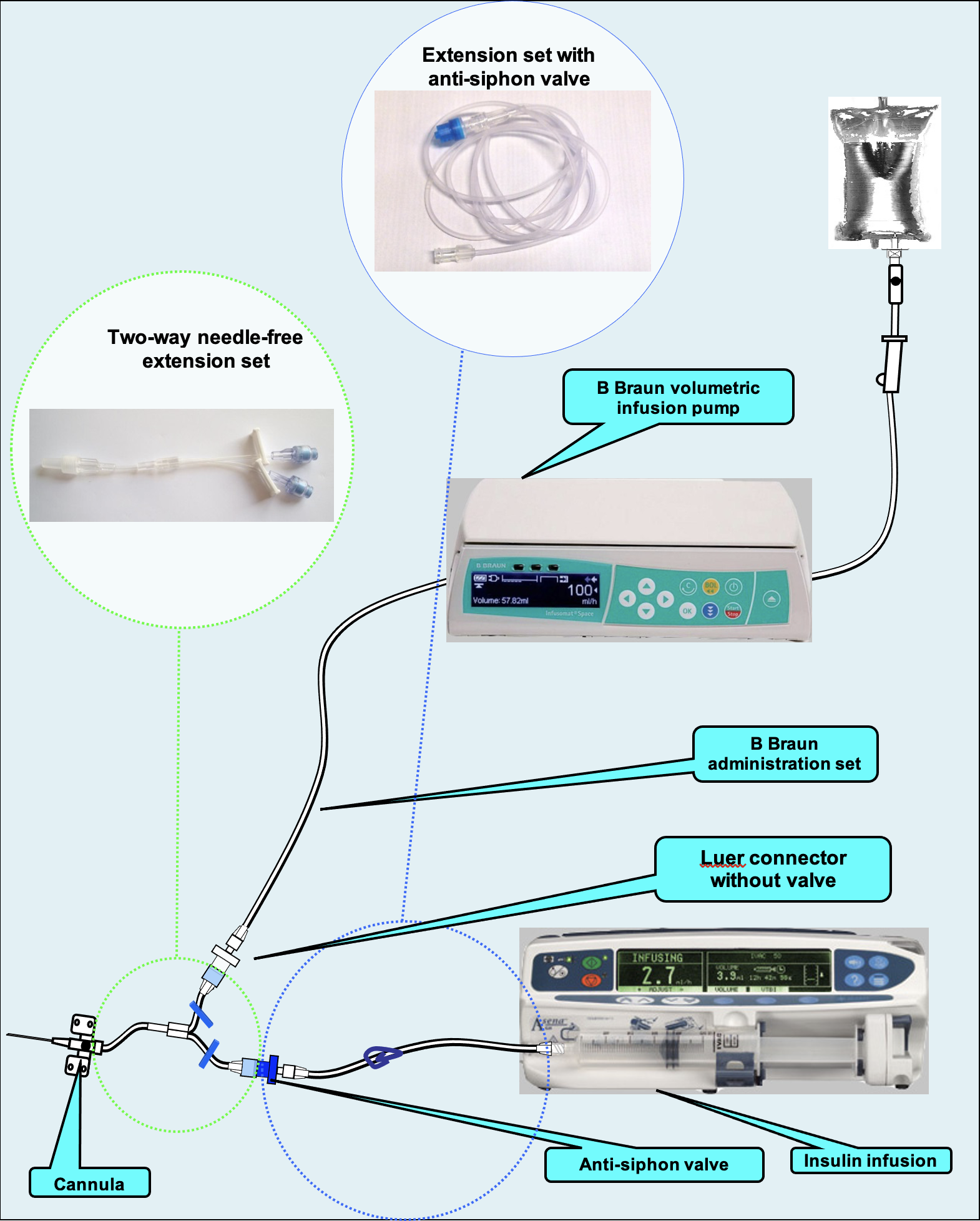DO NOT USE - ALL INFORMATION LIKELY INCORRECT IF NOT ACTIVELY DANGEROUS
Please use current guidelines available on the UHNM intranet for patient treatment
Please use current guidelines available on the UHNM intranet for patient treatment
- Administer insulin and fluid infusions via the same cannula - See figure 1
- prevent inadvertent and dangerous administration of either insulin or glucose alone in the event of a blocked cannula
- Use a syringe pump for insulin
- Use a volumetric infusion pump for IV fluid
- to detect and prevent reverse flow of insulin into fluid-giving set in the event of restricted or occluded flow through the cannula
- on release of such a restriction, risk of inadvertent insulin bolus administration from the fluid giving set
DEFINITION
Anti-siphon check valve
- One-way valve that:
- prevents ‘reverse flow’
- with higher opening pressures to prevent inadvertent fluid flow caused by siphoning when tying into a higher flowing line
PROCEDURE
Insulin infusion
- Administer by a syringe pump via an infusion set with an anti-siphon valve
- to prevent inadvertent flow to patient from an unclamped or damaged syringe
IV fluids
- Run IV maintenance fluid via a volumetric pump to a Luer connector without a valve. See figure 1
Assembly
- See figure 1
- Drug infusion syringe to a line with an anti-siphon valve
- run infusion through line
- place syringe into syringe driver
- IV fluid to an administration set to a Luer connector without a valve
- run IV fluid through administration set
- place administration set in a volumetric pump
- Connect each into one of the double ends of a two-way needle-free extension set
- run IV fluid through extension set
- Connect the single end of the two-way needle-free extension set into the cannula
Last reviewed: 2023-11-15
